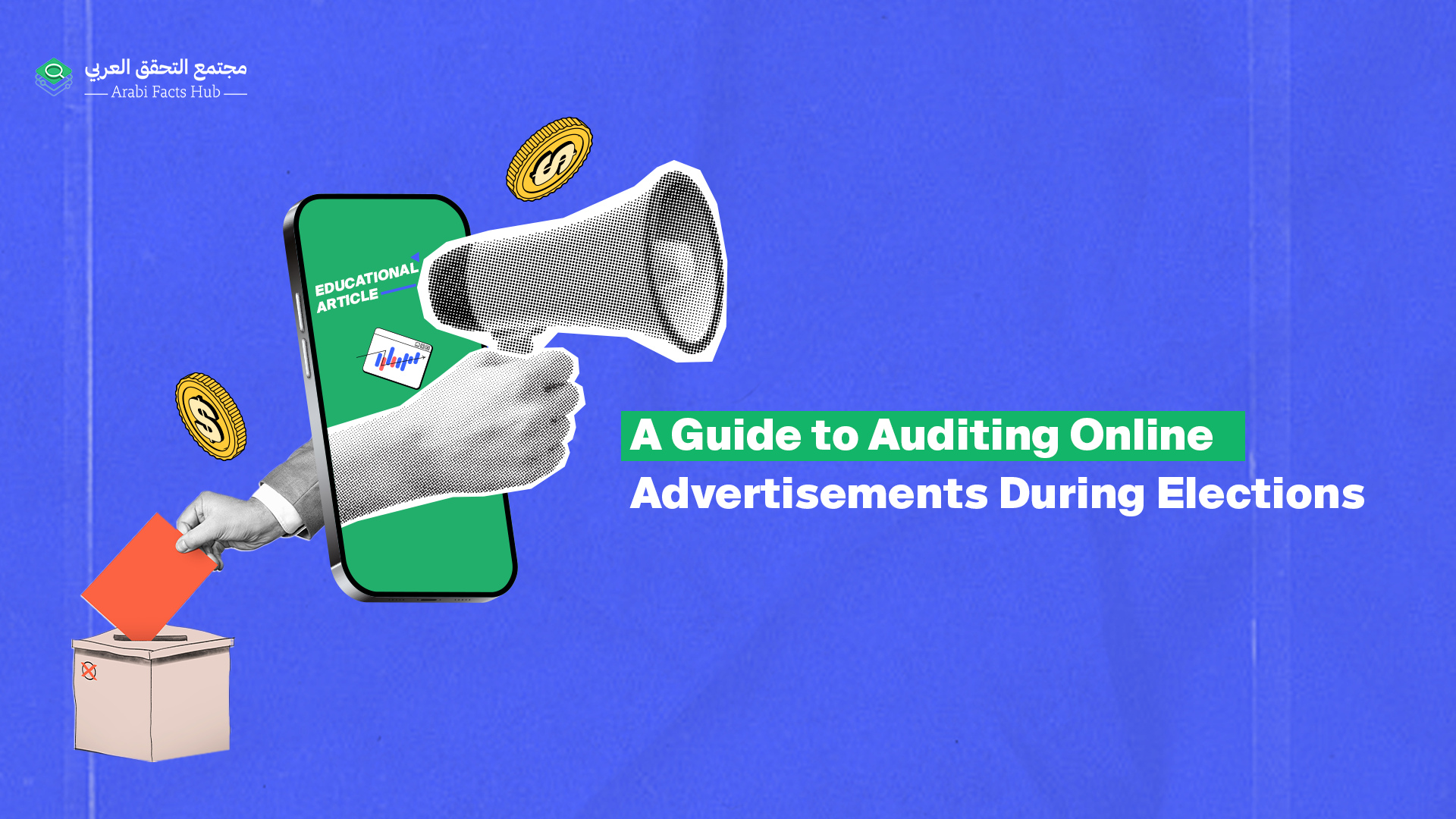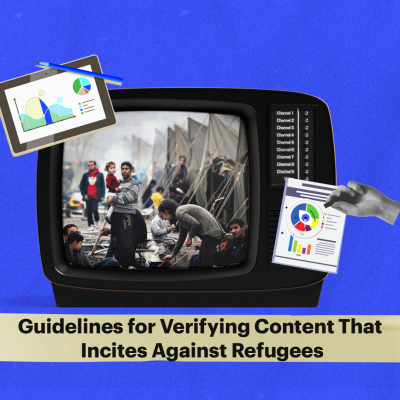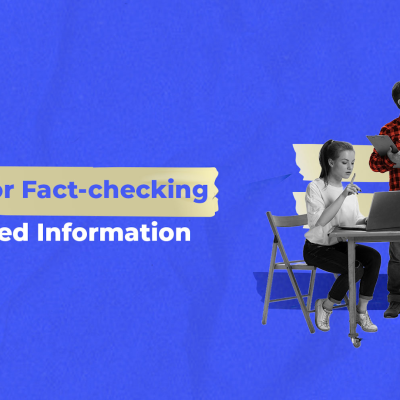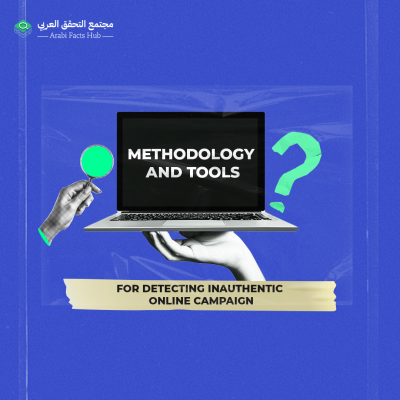A Guide to Auditing Online Advertisements During Elections

Paid ads analysis and fact-checking during the elections
Electoral advertising serves as a means to promote and inform the public about candidate programs, taking various forms such as street banners, flyers distributed in locations frequented by potential voters, and collaborations with specialized marketing agencies. These efforts extend through traditional media and now include advertisements on digital platforms.
As social media platforms continue to grow in popularity, they have become arenas for disseminating political messages and funded electronic advertisements. However, this shift has also introduced challenges, including the spread of misleading information, hate speech, and other violations of electoral laws.
This article provides a clear methodology for journalists and fact-checkers to analyze funded advertisements on social media platforms, uncover their objectives, and identify their sponsors. It also offers tips on detecting tactics used to bypass platform policies that govern sponsored ads, particularly in the context of conflicts and electoral campaigns in the Middle East and North Africa region.
Fact-checking Sponsored Electronic Advertisements
Sponsored advertisements are a legitimate and lawful means to reach audiences, provided they are transparent and comply with the local laws of the country where the elections are held. Fact-checkers can monitor the extent to which sponsored advertisements adhere to electoral silence periods and whether they comply with the maximum budget for advertisements stipulated by law. They can also review local laws and assess their alignment with best practices in advertising. The absence of a cap on sponsored electronic advertisements during election periods allows the most financially capable parties to reach a broader audience and exert greater influence, thereby undermining the principle of equality among competing parties. Fact-checkers must also monitor the content of the advertisement itself, and identify any promotion that may include hate speech, incitement against competitors, specific groups or categories, or defamation, as part of efforts to influence public opinion. An example is Trump’s use of sponsored ads to attack Hillary Clinton and gain an advantage over her in the 2016 U.S. presidential election.
The Importance of Auditing Paid Digital Advertisements in the Arab World
The greatest risk in using paid digital advertisements lies in their potential to include misleading information. As revealed in the annual report by Oxford University on social media manipulation by political actors, which studied 80 countries, approximately $10 million was spent on political advertisements across social media platforms. The report also highlighted the removal of over 317,000 accounts and pages by platforms for policy violations or the dissemination of misleading political content.
Several countries are holding elections at various levels this year. Jordan is conducting parliamentary elections, while Tunisia, Algeria, Mauritania, and the Comoros are holding presidential elections. Additionally, local council elections are being held in Libya and Somalia. In this context, there is an urgent need to scrutinize funded political advertisements, trace their sources of funding, and analyze them, particularly in the Middle East and North Africa, where a lack of transparency and limited access to information hinder effective election monitoring. Moreover, the governing systems and conflict-ridden contexts in these countries exacerbate electoral tensions and increase the likelihood of misuse of funded online advertisements.
Platform Policies
Online platforms that provide libraries for funded advertisements set conditions aimed either at restricting the use of political ads or regulating them to ensure compliance with adopted policies.
Meta's policies, for instance, allow funded advertisements addressing political or election-related content as long as they adhere to its guidelines and do not violate platform rules. They must also comply with the laws of the country associated with the ad. An ad accepted by the platform must include a specified publishing time, adherence to spending limits, a clear label, a disclaimer from liability for the platform, and disclosure of the advertisement's purpose.
X (formerly Twitter) permits the publication of funded political advertisements, provided they comply with the laws of the country to which the ad pertains and respect designated election silence periods.
In contrast, TikTok prohibits funded political advertisements and politically themed content. However, the platform has faced criticism for a lack of transparency in enforcing these policies. A BBC investigation revealed that some influencers on TikTok disseminated content opposing U.S. presidential candidate Donald Trump without disclosing that they were compensated by a marketing company.
Research and Data Collection
“
The process of researching sponsored electronic advertisement libraries serves as the starting point for preparing reports on election campaigns conducted on social media platforms. These libraries enable the collection of data that can later be analyzed and audited to derive insights.
Sponsored Advertisement Libraries on Various Platforms:
This library includes sponsored advertisements with a political nature on both Facebook and Instagram. What distinguishes it is that it provides periodic transparency reports and allows searching through keywords, various parties, candidates, as well as trending topics.
The X ads library provides insights into the account promoting advertisement, the advertisement's popularity, and its audience reach.
Through this library, it is possible to access ads displayed across various Google services. Additionally, the Google Political Ads section allows viewing political ads published on different applications.
The TikTok Ads Library publishes transparency reports on sponsored ads and complies with government requests to remove ads that violate local election regulations.
Snapchat has a dedicated library for political paid advertisements. This library adheres to transparency and includes an archive of political paid ads starting from 2018. The archive can be downloaded and reviewed for analysis.
This library contains information about political advertisements, including details about the advertising parties, the amounts spent on ads, and the target audience. Platform staff also review the content of the ads in this library before they are published.
“This library contains information about political advertisements, including details about the advertising parties, the amounts spent on ads, and the target audience. Platform staff also review the content of the ads in this library before they are published.
Before analyzing the content of paid electronic ads and their compliance with the laws, it is essential to document and archive the results of various searches for electronic ads. This helps prevent them from being lost or deleted by the publishers or by the platforms themselves in case of policy violations.
This information can be organized into a spreadsheet for archiving evidence, which should include the following:
- The platform displaying the advertisement
- The nature of the advertisement
- The advertiser
- The amounts paid
- The target audience
- The timing of the advertisement
- The advertisement link after it has been archived using various archiving tools
- Screenshots to confirm documentation
- Notes on the content of the advertisement; for example: it contains AI-generated images, targets a specific group, or promotes a party other than the advertiser.
Analysis of Funded Political Advertisements
Tracking the data collection and archiving phase, analyzing the content of the advertisement to identify the funder, their objectives, and the methods used to influence.
1- Analyzing the Messages According to the Target Audience
Targeting specific messages to a particular audience is a common practice in traditional election campaigning. However, funded election advertisements allow for the targeting of a specific audience and broadcasting messages aimed at them, without other groups being exposed to the content of these ads. This could open the door to broadcasting contradictory messages to attract different segments of the audience; for example, a candidate might send messages that benefit business owners while simultaneously sending messages supporting the interests of workers.
2- Advertisement Dates
The presence of advertisements before the official periods set by the authorities for launching election campaign advertisements is illegal; fact-checkers and journalists should be attentive to this.
3- Including Emotional Appeals or Stirring Emotions
The funded advertisement may be accompanied by content aimed at provoking fear in individuals or gaining their sympathy. In this case, it is important to analyze the tone used and the underlying emotional messages.
An example of this is when U.S. presidential candidate Kamala Harris used funded advertisements to condemn some of the positions of her rival, former U.S. President Donald Trump. She used videos featuring stories of women and their concerns about their health and reproductive rights if Trump were to rise to power, in an effort to persuade women to vote for her.
4- Budget
Violations can be monitored by examining the amounts paid in funded election campaigns and comparing them with the maximum limits set by the authorities.
5- Misinformation or Inauthentic Behavior
A study on criminal protection from media misinformation during election campaigns revealed the dangers of associating funded advertisements and propaganda with misinformation in the electoral process. This includes tarnishing the reputation of politicians and steering voters in a certain electoral direction, which casts doubt on the credibility of the voting process and the election results.
6- Using the Ad Observatory Tool
This tool is the result of an initiative titled 'Information Security in Democracy' at New York University. It allows for monitoring political advertisements on the 'Meta' platforms, Facebook and Instagram. Users can search using keywords, topics, actors, or geographical regions to analyze spending and the objectives of the advertisements.
Ultimately, analyzing the content of politically charged, funded electronic advertisements requires a research and analytical methodology, a review of local laws, platform policies, the use of traditional and new electronic tools, as well as an understanding of the nature of the electoral conflict and the key actors involved.









